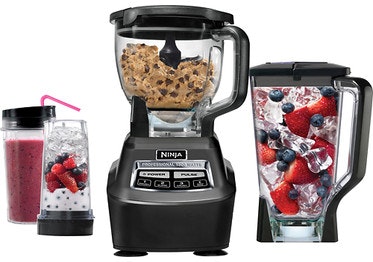DealDash Helps: Decipher Food Labels
If you don’t have a degree in science or nutrition then you might find food labels a little difficult to understand. Let’s take a look.
When you’re at the supermarket trying to decide what to put in your cart it’s a little bit too late to be doing research on the subject of what’s the healthiest for you and your family. Here are some tricky food labels that you can figure out now and use your newfound knowledge later when you are shopping.
Whole Grain/Whole Wheat – Whole grain and whole wheat look and sound very similar, but are the same thing? No! They are not the same. The difference is that whole wheat means that the bread is made from the entire wheat kernel. Whole grain means that the bread can be made of any whole-grain kernel. That grain may be wheat or it could be another grain such as oats or barley. The bread might even be made using a mixture of different whole grains.
What does this mean to you? If it doesn’t have 100% in the title then you are better off skipping it all together, no matter if it is whole wheat or whole grain. For some strange reason bread (and pasta) companies are allowed to put that a product is whole wheat/grain even if it’s almost entirely made of white flour, as long as it has 1% or more of wheat in it. Stick with the products that say 100% whole wheat or grain and you will be getting the best for your family.
Sugar-Free/No Sugar Added – If the choice is between sugar-free and “no sugar added” then go with the no sugar added. No sugar added means that no additional sugar was used when making the product, but it could still have healthier sugars included in the product such as from fruits. Both of these categories might also have artificial sweeteners added such as Splenda, Equal, etc. Keep a lookout for these in the ingredients, especially if you are a diabetic, because they can affect your blood sugar even if they aren’t technically sugar products.
Low Sodium/Reduced Sodium – If you are faced with a label that says either low sodium or reduced sodium, go with the Low sodium choice. Reduced sodium just means that there is 25% less sodium than the original food, which really doesn’t mean much if it was a food that was sodium-heavy to begin with such as Ramen Noodles. Check the actual nutritional label, and try to keep your sodium intake less than 2,000 mg per day. If you realize that you have eaten way more than your daily allotment please be sure to drink some extra water.
I hope that this article has gotten you interested about figuring out food labels. Check out DealDash for your kitchen needs such as pots and pans, knives, blenders, cutlery, or anything else you might think of. Check out the Kitchen and Dining Category on DealDash at this link right here. Good luck and happy bidding everyone!


